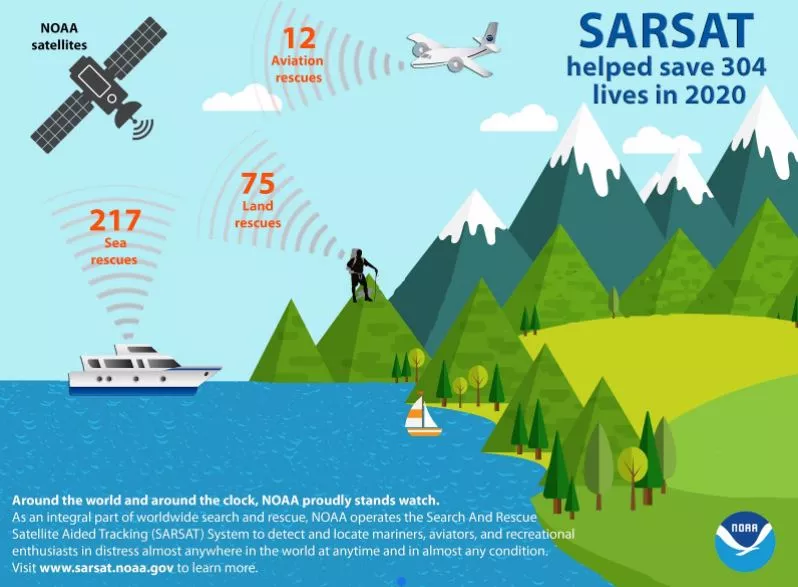
Happy SARSAT Beacon Awareness Day (#406Day)!
The Search and Rescue Satellite Aided Tracking (SARSAT) system is recognized by emergency responders and related governmental organizations every year on April 6 because it tracks 406 MHz distress signals from transmitters and beacons around the globe.
In 2020 alone, SARSAT potentially saved more than 304 lives in and around the U.S. and its territories. Thus far in 2021, there have been 51 rescues, including 24 people rescued from the sea, three people rescued from an aviation incident, and 24 people rescued on land thanks to Personal Locator Beacons (PLBs).
SARSAT is part of COSPAS-SARSAT , an international satellite-based monitoring initiative. Using this system, authorities can locate beacons almost anywhere in the world at any time, and in almost any condition. COSPAS is a Russian acronym for COsmicheskaya Sisteyama Poiska Avariynich Sudov, which means “Space System for the Search of Vessels in Distress.”
NOAA’s fleet of polar-orbiting and geostationary satellites—such as the JPSS and GOES-R series—is part of the COSPAS-SARSAT network. Additionally, signals can originate from emergency beacons aboard aircraft, boats, and from handheld PLBs.
Three recent events show the power of the SARSAT system during weather-related emergencies:
On Feb. 2, 2021, an emergency beacon was activated when an aircraft crashed 1 mile south of Spencer Airport in Spencer, Massachusetts.The Air Force Rescue Coordination Center received the alert and contacted Boston Air Traffic Control Center personnel, who deployed local first responders to the location. The three individuals onboard were located and transported to a local hospital for treatment of minor injuries.
On Nov. 30, 2020, a sailor in the Vendée Globe solo round-the-world yacht race was rescued after raging waves pounded his vessel apart in the Southern Ocean. After activating his beacon, his position was relayed to his closest competitor who was able to find him and take him safely aboard his own vessel.
SARSAT also assists with emergencies that involve hikers, sportsmen, and others on foot. On Jan. 9, 2021, two men mining for gold outside of Phoenix, Arizona activated a PLB beacon when one miner slipped and fell down a 20-ft shaft. Coordinating with the local sheriff’s office, the Air Force Rescue Coordination Center contacted the PLB owner and sent a helicopter and medics to the scene. Fortunately, they were able to extract the miner and transport him to a local hospital.
For further information about SARSAT and its partner operations, please read this article about its 2020 accomplishments and visit NOAA’s interactive website featuring past rescues through the use of this system throughout North America and the world. To register your own PLB with SARSAT, please visit www.sarsat.noaa.gov.
